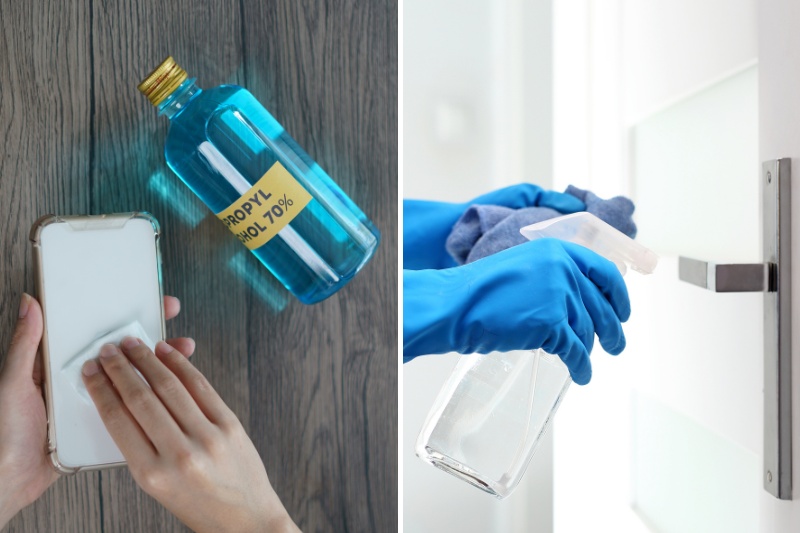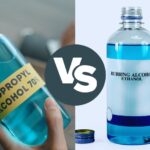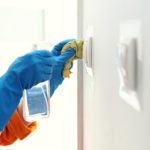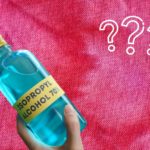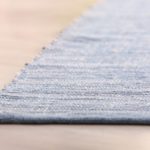If you’ve recently stumbled across the name ‘rubbing alcohol’, but you’re not sure what it is, you’ve come to the right place!
Below you’ll learn more about rubbing alcohol, how to use it, and where it can and cannot be used. So, read on to discover more about this wonderous liquid.
What Is Rubbing Alcohol?
Rubbing alcohol is a highly flammable, colourless liquid that is made up from bitterants, water and either isopropyl alcohol or ethanol.
Rubbing alcohol dries incredibly quickly, smells a bit and is poisonous. It should, therefore, never be consumed.
It’s excellent at disinfecting surfaces, tearing through grease and grime, and can be used to clean electronics!
Tips When Using Rubbing Alcohol for Cleaning
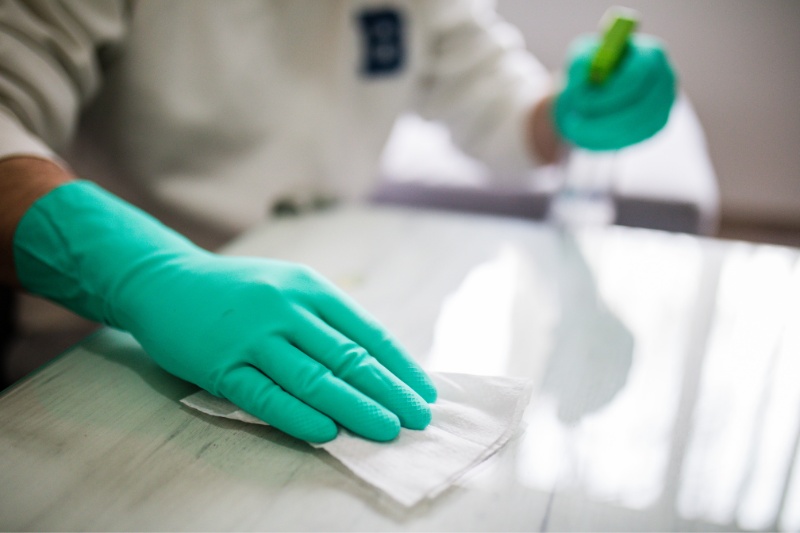
Follow the advice below before you use rubbing alcohol for cleaning:
- Do not mix rubbing alcohol with bleach! Combining the two ingredients will produce chloroform, which can irritate your eyes, nose and respiratory system.
- Always do a patch test before you use rubbing alcohol to clean a surface. Dip a cotton bud in some liquid and find a discreet patch to test the chemical out.
- Keep rubbing alcohol away from open flames. The liquid is highly flammable!
- Do not use rubbing alcohol on unfinished surfaces.
- Always open plenty of windows when using rubbing alcohol.
- Keep rubbing alcohol away from delicate materials like acetate, as it will damage it beyond repair.
- Choose the right strength rubbing alcohol for your cleaning task. Most rubbing alcohols that you see in shops/online contain 70% isopropyl alcohol, which is normally strong enough. Rubbing alcohol, however, can contain up to 99% isopropyl alcohol. The higher the number, the stronger the liquid is. So, check the bottle’s label before you buy it, you don’t want to purchase a liquid that’s too strong.
- Do not use rubbing alcohol around children and animals. Rubbing alcohol is a clear liquid that looks a lot like water. It’s very easy to mistake the item for regular drinking water, but ingesting rubbing alcohol can make you seriously ill.
- Wear gloves, a mask and eye protection when handling rubbing alcohol.
How to Use Rubbing Alcohol When Cleaning
How you use rubbing alcohol depends on what cleaning task you want to complete, but in general you will carry out the following steps:
Step 1: Collect your tools
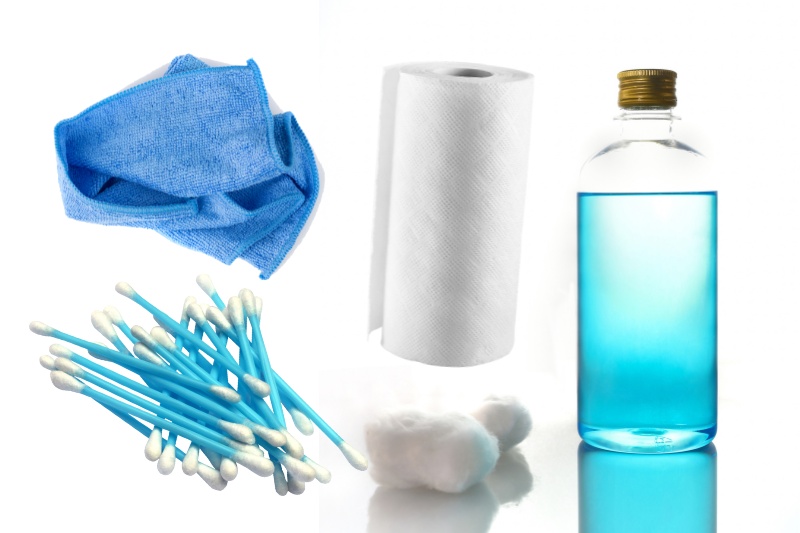
You will typically need these items:
- Rubbing alcohol that contains 70% isopropyl alcohol
- Cotton buds
- Clean cloths
- Cotton wool balls
- Paper towels
Step 2: Check care tags and do a patch test
Before you start cleaning, it’s worth reading any care booklets and tags to see what advice they give you on how to care for your product. Using rubbing alcohol to clean some gadgets can void the warranty, for example.
Then you need to find a discreet patch of surface to test the rubbing alcohol out on. If you don’t see any damage or discolouration after doing the test, you can continue using the liquid to clean the item/surface.
Step 3: Apply the rubbing alcohol
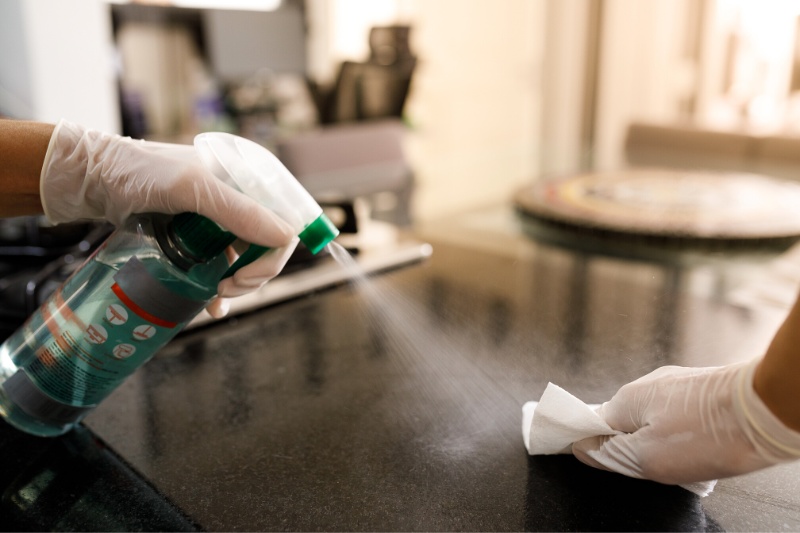
It’s important that you try and remove as much debris from the surface you intend on cleaning, so nothing hinders the actual cleaning process. So, brush obvious dirt away or blot up liquids before you apply the rubbing alcohol.
You’ll then need to apply a small amount of rubbing alcohol to your cotton bud/cloth and wipe the surface/item you need to clean with it. There’s no need to be rough, just gently blot/massage the surface with the cotton bud/cloth.
You may need to add some more liquid to the bud/cloth as you clean because the surface will dry quickly.
Throughout the cleaning process you need to make sure that plenty of fresh air can get into the room you’re working in.
Rubbing Alcohol Uses in Cleaning
Rubbing alcohol has so many uses that it’s impossible to list every single one. So, here are a few ideas to get you started:
- Stain remover – Stains you can treat with rubbing alcohol include, but are not limited to, nail polish, foundation, chewing gum, and fake tan. You’ll need to blot some rubbing alcohol into each stain, wait a few minutes, and then clean the item or surface as normal.
- Stainless steel shiner – Pop a few drops of rubbing alcohol onto a clean cloth and rub the stainless-steel surface in a circular motion. Rubbing alcohol dries extremely quickly and will leave pots and pans with a streak-free finish.
- Remove coal from a carpet – Simply add a few drops of rubbing alcohol to a clean cloth, then blot the damp cloth over the coal patch. Allow the liquid to dry and then blot at the area with a new clean cloth. The coal should lift off the carpet.
- Clean and disinfect electronics – The fact that rubbing alcohol evaporates so quickly is what makes it a good cleaner for electronic devices. To clean a gadget, just dip a cotton bud in some rubbing alcohol and clean the dirty surface. You don’t need to use a huge amount of rubbing alcohol!
- Remove hairspray from mirrors – Pour a little rubbing alcohol onto a cloth and wipe the mirror in a circular motion. The hairspray will come off the mirror with ease and the surface will be glowing by the end.
- Get rid of permanent marker from plastic – Soak a cotton wool ball in some rubbing alcohol, squeeze the excess liquid out of it, and wipe the marked area down.
- Disinfectant – In a spray bottle mix one part water with two parts rubbing alcohol. Give the bottle a quick shake, then spray various surfaces in your home with the disinfectant you’ve created. Keep in mind that rubbing alcohol evaporates extremely quickly, so this method may not be suitable when cleaning large areas!
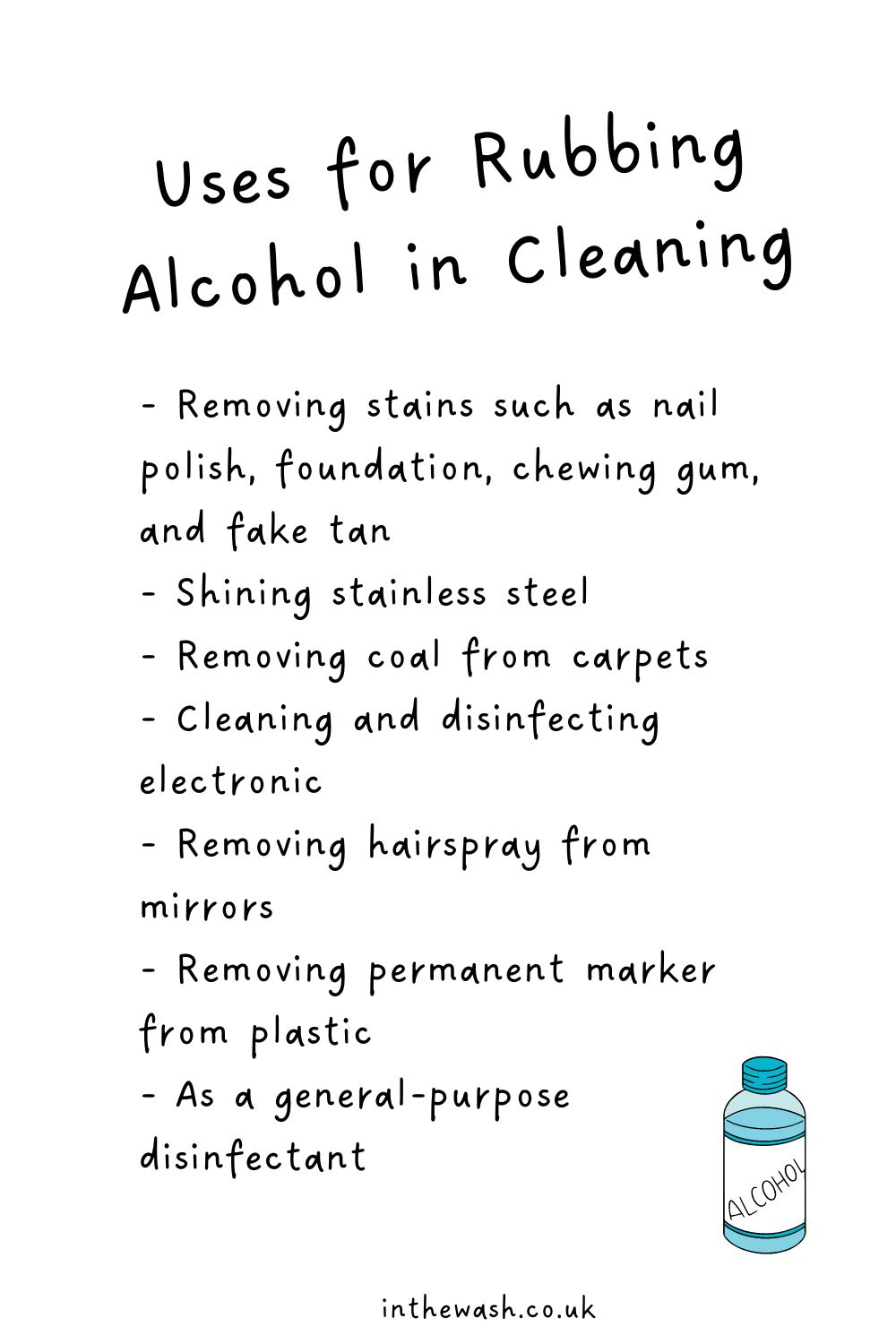
What Shouldn’t You Use Rubbing Alcohol On?
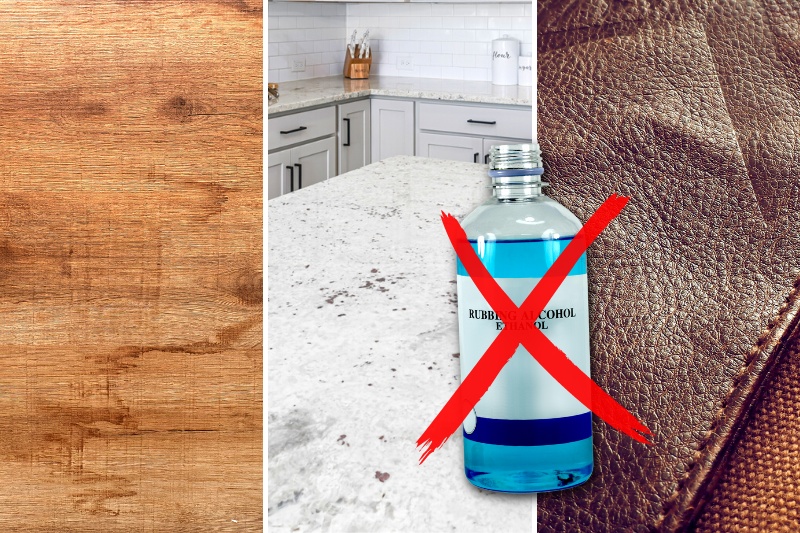
Before you use rubbing alcohol to clean a surface(s) in your home, you should always do a patch test.
There are many surfaces that rubbing alcohol cannot be used on, such as the following:
- Unfinished surfaces
- Wood, especially one that’s been treated
- Painted areas
- Quartz
- Lacquered surfaces
- Granite
- Varnished areas
- Delicate materials, like acetate, wool and silk
- Leather
Where Can You Buy Rubbing Alcohol?

Rubbing alcohol can be bought in shops and pharmacies, like Superdrug and Boots. It is, however, usually called ‘surgical spirit’ in stores, so look out for this name instead of rubbing alcohol.
Additionally, you can buy various versions of rubbing alcohol online and from places like Amazon.
See our guide on where to buy rubbing alcohol in the UK for more information.
Is It Okay to Clean with Rubbing Alcohol?
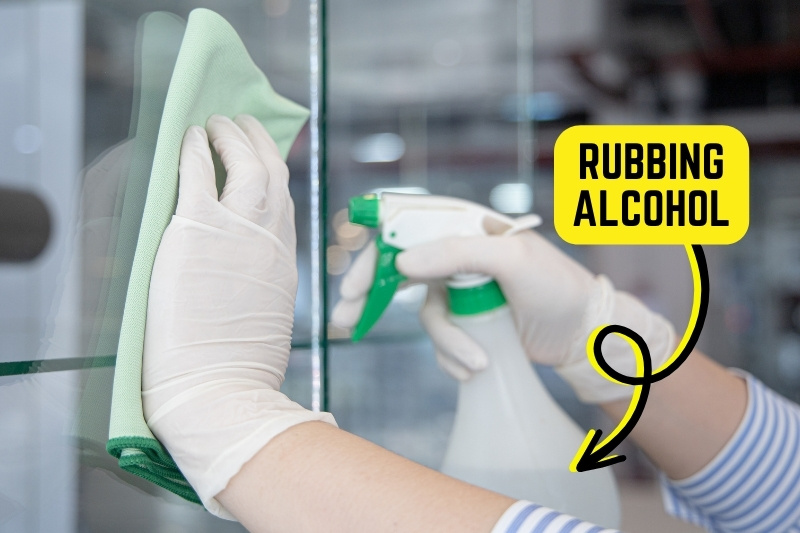
It is okay to clean items and surfaces with rubbing alcohol, as long as you use the liquid correctly and safely.
For example, you should always do a patch test before you use rubbing alcohol, you must open plenty of windows, and you need to keep in mind that the liquid can damage some materials.
As noted above, you can use rubbing alcohol to clean items and surfaces in your home. However, rubbing alcohol may not be the most effective cleaner to use around your home. Why?
Rubbing alcohol has a tendency to dry incredibly quickly, so you won’t get much time to work with the product before it evaporates. And while this is ideal when you’re cleaning electronic devices that cannot get wet, or you’re tackling small and targeted cleaning jobs. It does make cleaning larger surface areas more troubling.
If you used rubbing alcohol to clean a big area, you’d have to keep applying the liquid to it just to keep it damp so you can clean it.
This is time consuming, and you’d be better off using a different cleaner that doesn’t evaporate as fast.
Do You Need to Rinse Rubbing Alcohol Off?
No, you don’t usually need to rinse rubbing alcohol off a surface because it evaporates very quickly.
Obviously if you pour or spill too much rubbing alcohol onto a surface you will have to mop up the excess liquid. But if used correctly, there shouldn’t be a problem.
What Is the Difference Between Rubbing Alcohol and Isopropyl Alcohol?
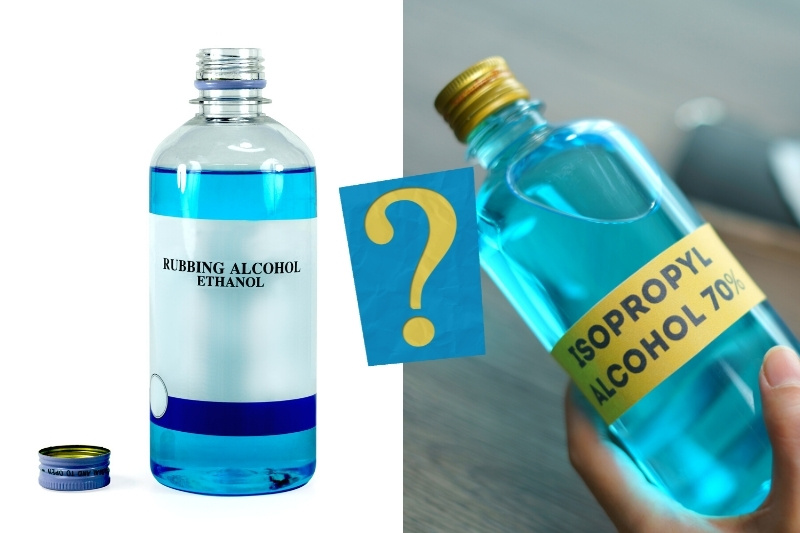
Rubbing alcohol is a colourless denatured alcohol liquid that contains water, bitterants, and either isopropyl alcohol or ethanol. It’s much weaker than isopropyl alcohol.
Isopropyl alcohol, on the other hand, is pure alcohol and is incredibly strong!
Isopropyl alcohol does share some similarities with rubbing alcohol namely, it is also colourless, poisonous and flammable.

Bethan has a passion for exploring, reading, cooking and gardening! When she’s not creating culinary delights for her family, she’s concocting potions to keep her house clean!
